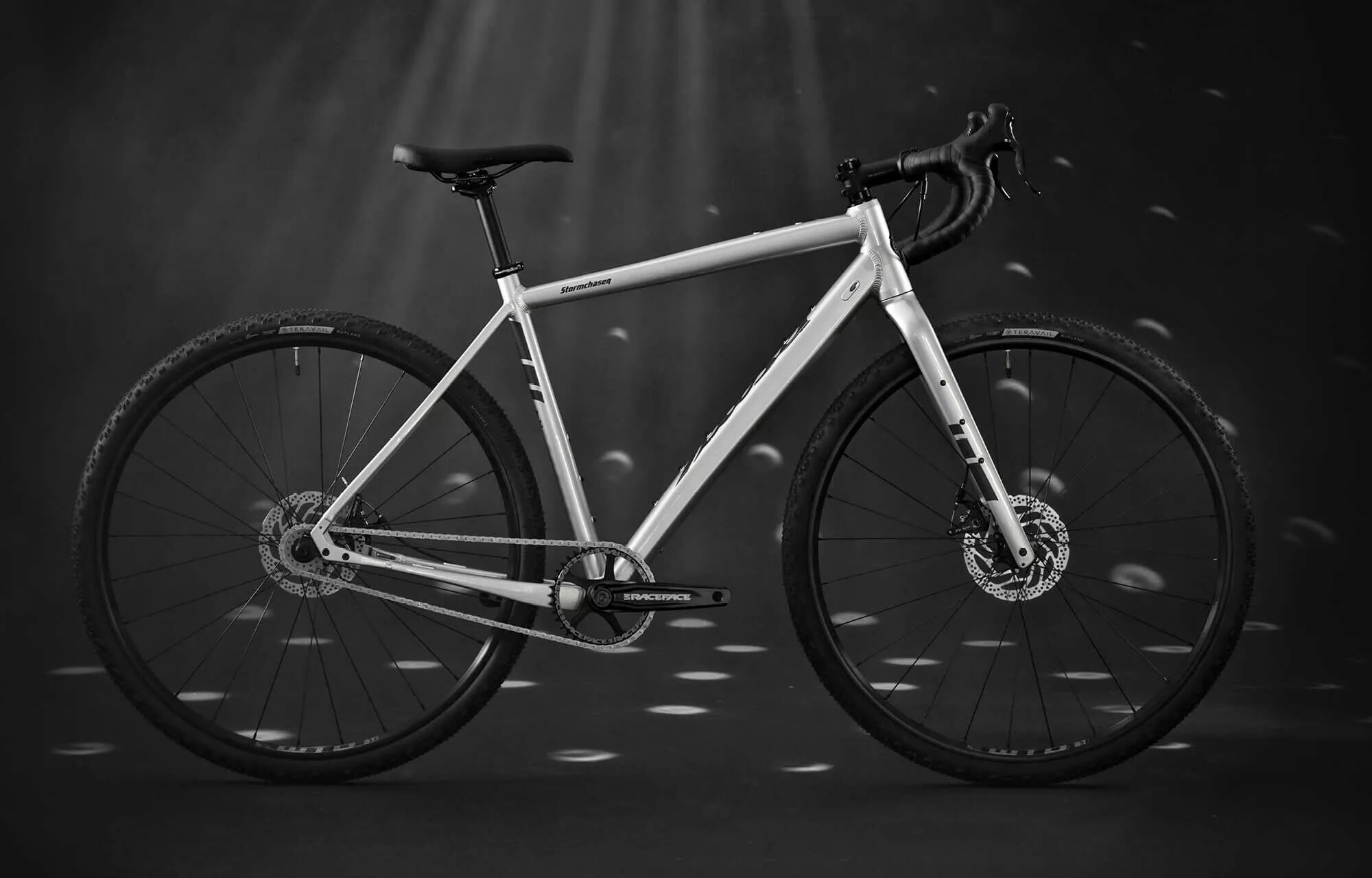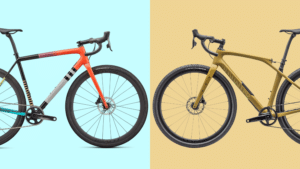Updated: 20th August 2025
Single speed setups are becoming rather popular in the bikepacking space. Are you a sucker for punishment? Or sick of derailleur mechanicals? Want the simplicity of a single speed setup? A single speed gravel bike could be a good option. These bikes are perfect if you are looking for a single speed gravel bike for your commute to work or for riding a lap around Australia, like Joseph did in this blog post.
The appeal of single speed gravel bikes lies in their stripped-down approach to cycling. With fewer components to maintain, adjust, or potentially fail on long adventures, they offer unparalleled reliability. The forced consistency of a single gear ratio also builds strength and teaches valuable cadence control skills that translate to all forms of cycling.
Best Single Speed Gravel Bikes for 2025
Salsa Stormchaser
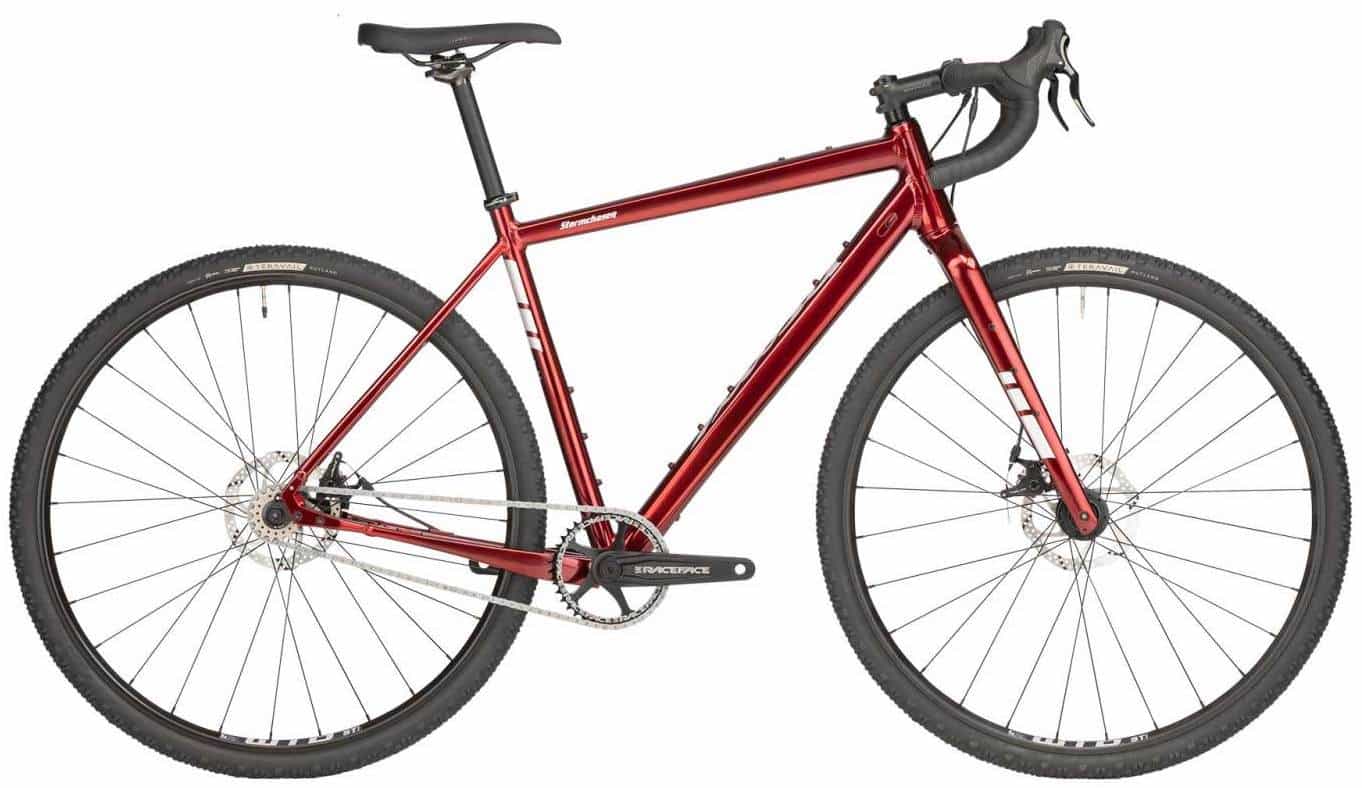
Are you after that ultimate single speed bikepacking rig for those gnarly across country bikepacking races?
Made for those muddy conditions, the Stormchaser was originally designed to excel in the worst weather conditions nature can produce. Made from a lightweight aluminum frame and carbon fork that borrow from Warbird’s stable geometry and added Class 5™ VRS to soak up micro-impacts. With a large emphasis on wet weather conditions while riding this bike. It includes abrasion plates on the fork, plus internal cable routing and fender mounts to protect you and your gear from the elements to prevent wear from mud-caked tires and extra tire clearance to keep you rolling in all conditions.
Clearance for up to 47 mm tires. Weighing at total of 9.5 kg thanks to the alloy frame and carbon fork construction. Powered by a Race Face Ride, 38t crank and either a 17t and 18t cogs with spacer kit. Combined with the stock 700c x 42mm tires. You get a 58.65″ to 62.26″ gear inch range.
They have even come out with an updated 2022 model which is not singlespeed but has front suspension for those even rougher trails.
Van Dessel Country Road Bob
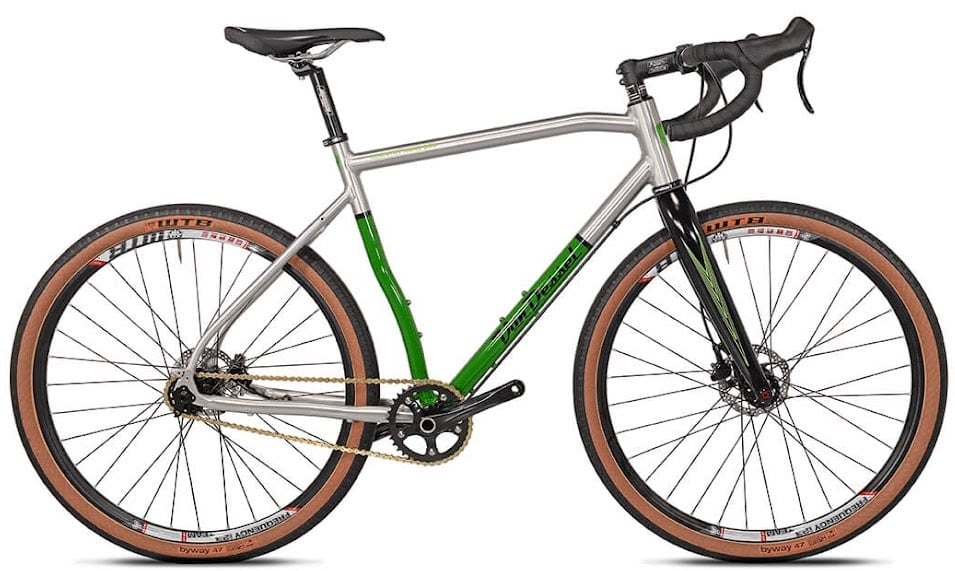
After the company stopped making this bike a few years ago the came back with an updated version in 2020. With a more modern version of the classic eye-catching bike. Thanks to the shiny brushed aluminum finish and green tones. Not to mention all the curvy lines. Making this bike stand out from the crowd. The Country Road Bob comes in five sizes, including a 62cm frame for taller riders. Approximate weight comes in at around 9.93 kg. It comes with 650b x 47 mm tires with clearance for up to 40mm 700c tires if you wish to run larger volume tires.
When it comes to geometry for a 56cm frame, the Country Road Bob features a 440 mm chainstay, 1,045 wheelbase, 50 cm fork/rake offset, and a 1.46 stack/reach ratio. When it comes to gearing the Country Road Bob has a Cold Forged Alloy 38t crank and Shimano Freewheel 20t cassette combined with those 650b x 47 mm tires you get a gear inch of 50.42″
Bombtrack Arise
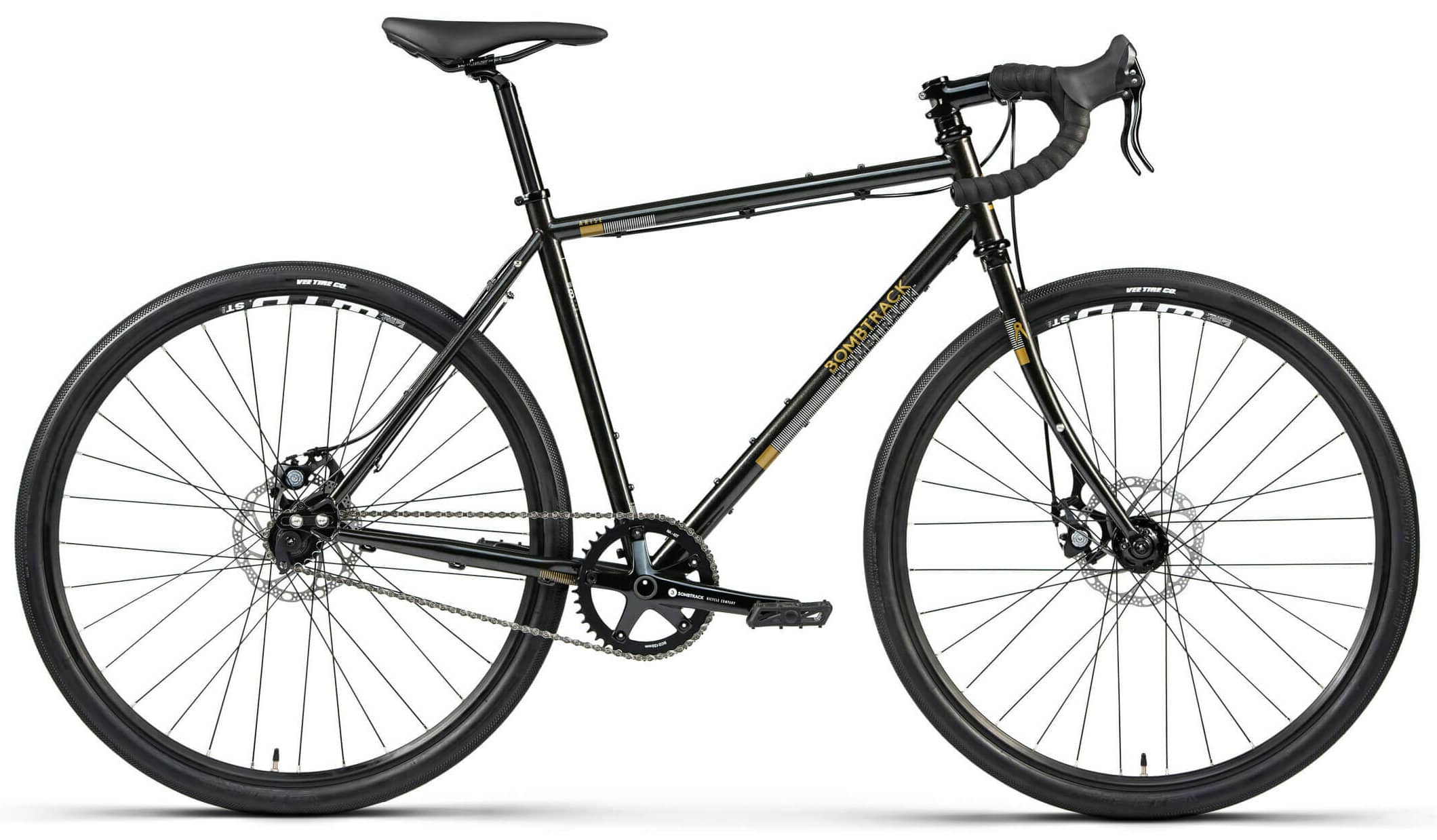
A full steel gravel bike build weighing in at 11.4 kg with 700c x 40 mm tires and clearance for up to 42 mm rubber. The Arise is a simple, versatile bike, thanks to the single speed setup you don’t need to focus on maintenance. This bike is perfect for commuting or shredding trails. Thanks to the fast, wide tires and flared drop bars for extra comfort on the rougher stuff. You even have the option to run mudguards and a rack, and even the possibility to convert the frame and hub to run an 11-speed drivetrain if you get sick of the single-speed setup.
The XS and Small frames come with 650b wheels for optimised fitting for smaller riders. It comes with the 42T Bombtrack TAF19 aluminium crank and the 16T heat treated crmo cassette. Giving you a 73.10″ gear inch.
Genesis Flyer
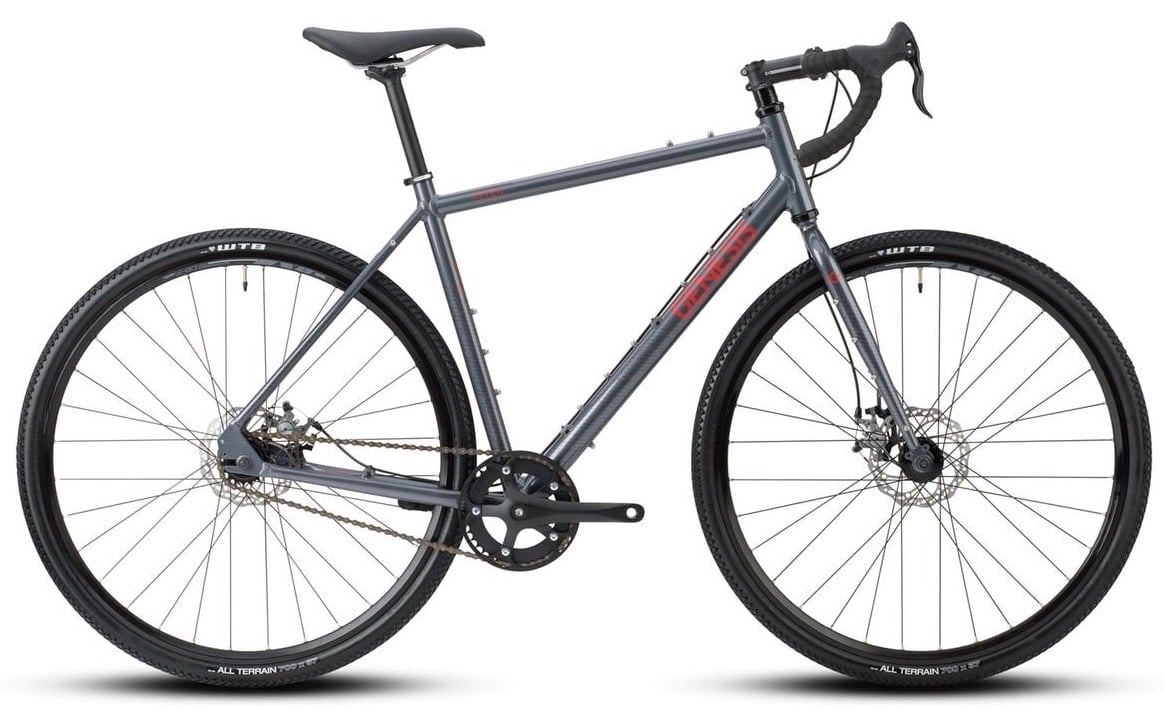
All-road adventure single-speed bike, Genesis categorise this bikes as the ultimate foul weather winter bike or sharp stopping city bike. It is the only bike in Genesis line up that focuses on simplicity of the single-speed setup, perfect for minimising maintenance, cleaning and adjustment, leaving you more time to get on with riding. Built with an alloy frame and steel fork. You get a bike with a rather upright riding position with a 1.54 stack/reach ratio, 50 mm rake, 1,035 mm wheelbase. With a Samox AF13 / 42T crank and LMA-A 17T freewheel cassette, combined with the 700c x 37 mm tires you get a 67.68″ gear inch.
The long-established single-speed Flyer has gone fully gravel. Now based on Genesis’s popular CDA cyclocross frameset, it has huge 37mm tyres, easy gearing and myriad mounts for racks and mudguards. The updated model ditches caliper brakes for powerful disc brakes, making it unafraid to get muddy whether commuting along canal paths or heading off on bikepacking adventures.
Octane One Kode
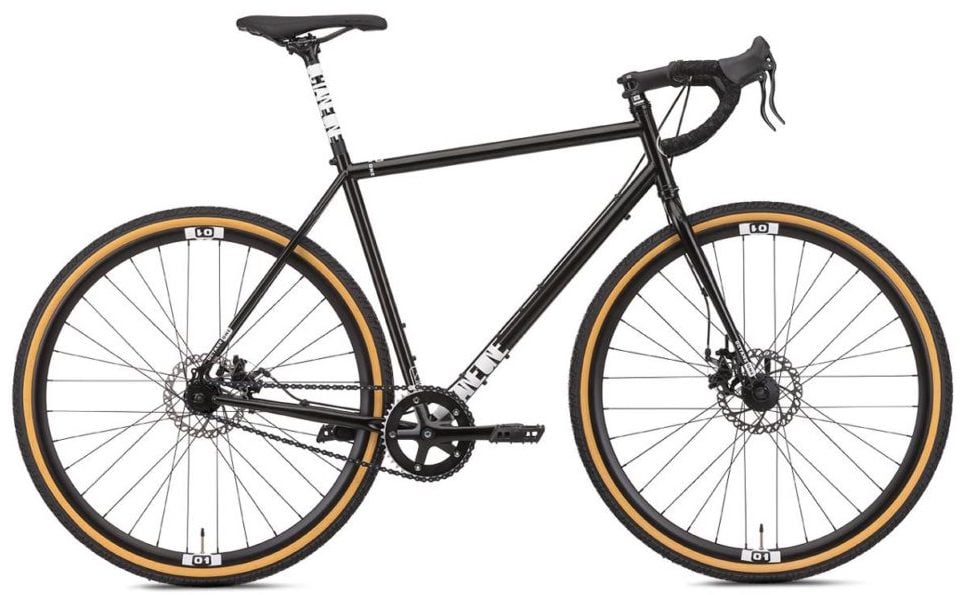
Octane consider this a road and gravel bike that is just at home as an urban commuter as it is a road adventure bike. With the option to run fenders and racks. If you want to get more out of this bike when it comes to adventure you have the option to add gears and you get an awesome adventure bike, with geared drivetrain compatible you will have to purchase the rear mech hanger which is sold separately. Built around a cromoly frame & fork made from custom butted Tange steel tubes. Clearance for up to 700c x 43c or 650b x 47c tires. It comes with 700c x 40 mm tires.
The Lassco 42t crank and 18t cassette results in a 64.40″ gear inch. With a 1.49 stack/reach ratio, 425 mm chainstay and 1,014 wheelbase.
Terlingua Gravel Bike
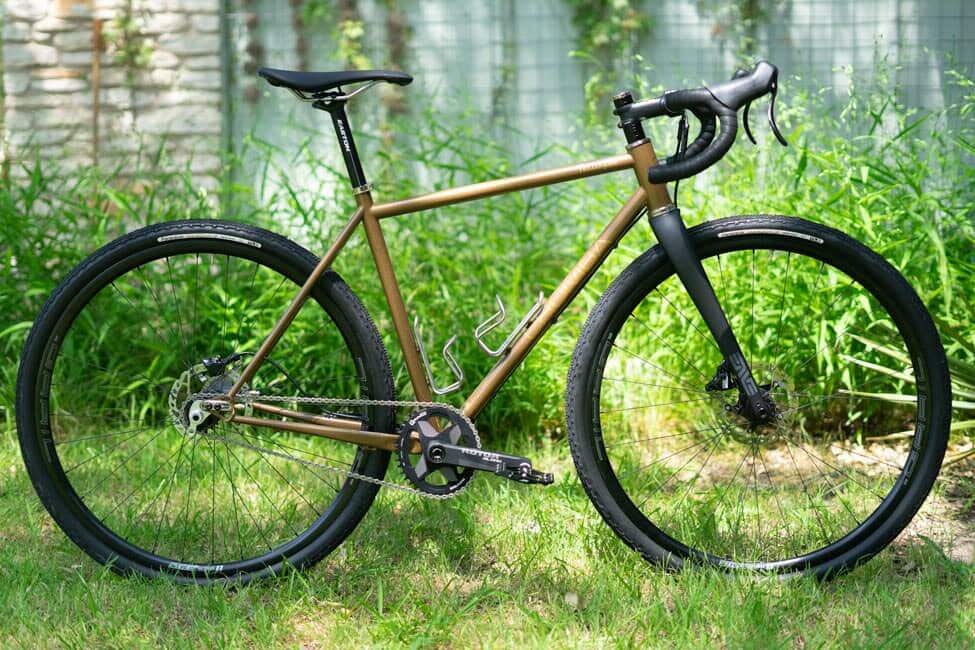
Are you looking for a custom single speed gravel bike option. The Terlingua by Chumba is made for long endurance gravel rides and races across a variety of terrains. It’s a high performance gravel bike, with geometry that is also at home sprinting out of corners at your local cyclocross race. Representing the best in modern steel bike design with a low frame weight & a team tested tubeset selected for performance.
Features like stainless steel sliding Paragon Machine Works dropouts w/ replaceable inserts, industry leading compatibility for tire clearance, chainring size and drivetrain styles mean the Terlingua will find a home in your bike stable for years of service. The Terlingua steel comes in a full range of sizes from 50-60cm and fit true to size. Made in USA. With tire clearance for either 650b x 47mm tires (in all dropout positions) or 700c x 50mm tires (in dropout rear position). Find out more about what builds are possible at Chumba USA.
Converting Existing Gravel Bikes to Single Speed
For many riders, converting an existing geared gravel bike to single speed offers the most cost-effective path into this riding style. This approach allows you to experiment with single speed riding without the commitment of purchasing a dedicated bike, while potentially breathing new life into an older frame.
Suitable Frame Requirements
Not all gravel bikes make good single speed conversion candidates. The ideal frame should have:
Horizontal or semi-horizontal dropouts: These allow chain tension adjustment without additional hardware. Vertical dropouts require a chain tensioner or eccentric bottom bracket, adding complexity and potential failure points.
Adequate tire clearance: Single speed drivetrains often benefit from wider tires for traction and comfort. Ensure your frame can accommodate at least 38-40mm tires with room for mud clearance.
Disc brake mounts: While rim brakes can work, disc brakes provide superior stopping power and aren’t affected by rim wear – crucial for adventure riding where brake reliability matters most.
Steel or aluminum construction: These materials handle the stress concentrations of single speed conversions better than carbon, which may not be designed for the different load patterns.
Conversion Components Needed
Single Speed Cog and Spacers: A single speed specific cog (typically 16-20 teeth) with appropriate spacers to position it correctly on your existing rear hub. Quality options include Surly, White Industries, and All-City cogs.
Chain: A standard single speed chain or quality 1/8″ track chain. Single speed chains are often more robust than derailleur chains and designed for the higher tension loads.
Chainring: You may need a different front chainring to achieve your desired gear ratio. Narrow-wide chainrings help prevent chain drops without a derailleur’s guidance.
Chain Tensioner (if needed): For frames with vertical dropouts, a chain tensioner maintains proper chain tension. Quality options include the Surly Singleator or Paul Components Melvin.
Tools: Chain whip, cassette lockring tool, and basic bike maintenance tools for the conversion process.
Step-by-Step Conversion Process
- Remove existing drivetrain: Strip off the rear derailleur, shifters, cables, and cassette. Keep the front derailleur and shifters for potential reconversion.
- Calculate gear ratio: Use online calculators to determine the optimal chainring/cog combination for your riding terrain and fitness level.
- Install single speed cog: Position the cog on your existing freehub with appropriate spacers. Most conversions use the middle chainring position for optimal chainline.
- Adjust chain length: Size the chain for proper tension – tight enough to prevent skipping but loose enough to not bind the drivetrain.
- Fine-tune chainline: Adjust chainring position or add/remove spacers to achieve perfect chainline alignment.
- Test and adjust: Take short test rides to ensure smooth operation and make final tension adjustments.
Popular Conversion Candidates
Surly Straggler: Designed with single speed conversion in mind, featuring horizontal dropouts and robust steel construction.
All-City Space Horse: Another steel option with conversion-friendly geometry and ample tire clearance.
Kona Rove: Some model years feature semi-horizontal dropouts perfect for single speed conversion.
Older 26″ mountain bikes: With appropriate components, these make excellent budget gravel conversions with massive tire clearance.
Advanced Gear Ratio Selection Guide
Choosing the optimal gear ratio represents the most critical decision in single speed setup, affecting everything from climbing ability to top speed. Understanding how different ratios perform across varied terrain helps avoid costly mistakes and ensures your single speed matches your riding style.
Understanding Gear Measurements
Gear Inches: The most accurate comparison method, calculated as (chainring teeth ÷ cog teeth) × wheel diameter. This represents how far your bike travels with each pedal revolution in inches.
Gear Ratios: Simple chainring/cog relationship (38/18 = 2.11). Useful for quick mental calculations but doesn’t account for wheel size differences.
Development: Metric equivalent of gear inches, measuring distance traveled per pedal stroke in meters.
Terrain-Specific Recommendations
Flat Gravel Roads (65-75 gear inches): Higher ratios like 42/16 or 38/15 maximize efficiency on endless gravel roads and bikepacking routes. Expect some walking on steep climbs.
Rolling Hills (60-68 gear inches): The sweet spot for most riders, ratios like 42/18 or 38/16 handle moderate climbing while maintaining reasonable speed on flats.
Mountainous Terrain (52-62 gear inches): Lower ratios such as 36/17 or 34/16 make steep gravel climbs manageable, though you’ll sacrifice top-end speed.
Mixed Terrain (58-65 gear inches): Versatile ratios like 38/17 or 42/19 provide the best compromise for varied riding conditions.
Rider-Specific Factors
Fitness Level: Stronger riders can push higher ratios effectively, while developing riders benefit from more forgiving lower ratios that don’t punish mistakes.
Cadence Preference: High-cadence riders often prefer slightly lower ratios (60-65 gear inches) while power-focused riders may choose higher ratios (65-70+ gear inches).
Riding Style: Racing applications often use higher ratios for maximum efficiency, while touring setups prioritize climbing ability with lower ratios.
Local Terrain: Your regular riding area should heavily influence ratio choice. Flat regions call for higher ratios, while mountainous areas demand lower gearing.
Fine-Tuning Your Setup
Start conservatively with a slightly lower ratio than you think you need. It’s easier to upgrade to a smaller cog (higher ratio) than struggle with gear that’s too high for your terrain.
Consider seasonal ratio changes – many riders run higher ratios in summer when fitness peaks and lower ratios during winter training periods.
Track your rides and note where your current ratio feels too high or too low. Modern cycling computers can help identify optimal cadence ranges for your riding style.
Comprehensive Maintenance Guide
Single speed gravel bikes earn their reputation for reliability through mechanical simplicity, but proper maintenance ensures decades of trouble-free service. Understanding the unique maintenance requirements and intervals helps maximize performance and component lifespan.
Daily and Pre-Ride Checks
Chain Tension: Single speed chains run at higher tension than derailleur setups. Check for proper tension – approximately 1/2 inch vertical movement at the midpoint between chainring and cog.
Tire Pressure: Without gear changes to maintain momentum, proper tire pressure becomes crucial for efficiency. Check pressure before each ride, adjusting for terrain conditions.
Brake Function: Test both brakes for proper engagement and stopping power. Single speeds often rely more heavily on brakes for speed control.
Chain Line: Ensure chain runs straight from chainring to cog without excessive angle that could cause premature wear or chain drops.
Weekly Maintenance Tasks
Chain Cleaning: Remove accumulated dirt and grime with degreaser and brush. Single speed chains collect more debris due to higher tension and lack of derailleur protection.
Chain Lubrication: Apply appropriate lubricant for conditions – wet lube for muddy/rainy rides, dry lube for dusty conditions. Wipe excess to prevent dirt accumulation.
Brake Pad Inspection: Check pad wear and alignment. Single speeds often see more brake use, particularly on descents where gear changes aren’t available for speed control.
Wheel Trueness: Inspect wheels for lateral and radial trueness. Single speed drivetrains put different stresses on wheels that can accelerate wear patterns.
Monthly Deep Maintenance
Drivetrain Deep Clean: Completely degrease and clean chain, chainring, and cog. Inspect for wear patterns or damage that could indicate alignment issues.
Chain Wear Measurement: Use a chain checker tool to monitor stretch. Single speed chains often last longer than derailleur chains but should still be monitored regularly.
Bottom Bracket Service: Check for play or rough operation. Single speed drivetrains can mask bottom bracket issues that would be obvious with derailleurs.
Headset Adjustment: Ensure smooth steering without play. Single speeds often see more aggressive handling that can accelerate headset wear.
Wheel Bearing Service: Inspect and service hub bearings. Single speed hubs often use different bearing arrangements that may require specific service intervals.
Seasonal Overhauls
Complete Drivetrain Replacement: Replace chain, cog, and chainring as a set when wear limits are reached. This ensures optimal performance and prevents accelerated wear of new components.
Brake System Service: Bleed disc brakes, replace brake fluid, and inspect all brake components. Single speeds rely heavily on brakes for control.
Frame Inspection: Check frame and fork for cracks, particularly around dropout areas that see high stress in single speed applications.
Component Torque Check: Verify all bolts are properly torqued, paying special attention to chainring bolts and wheel axles.
Troubleshooting Common Issues
Chain Skipping: Usually indicates worn chain/cog interface or improper chain tension. Check chain wear and adjust tension before replacing components.
Chain Drops: Often caused by poor chainline alignment or insufficient chain tension. Verify chainline and consider narrow-wide chainring if problems persist.
Excessive Noise: May indicate dirt accumulation, improper lubrication, or component wear. Clean and inspect entire drivetrain systematically.
Poor Shifting (Fixed Gear): On flip-flop hubs, difficulty engaging fixed mode often indicates cog threading issues or improper chain tension.
Tool Requirements
Essential Tools: Chain tool, tire levers, multi-tool with hex keys, pump, chain checker, and basic cleaning supplies.
Advanced Tools: Chain whip, lockring tool, torque wrench, and bearing service tools for complete maintenance capability.
Emergency Kit: Spare quick link, tire boot, patch kit, and basic tools for trail-side repairs.
Cost Considerations
Single speed maintenance costs typically run 40-60% less than comparable geared bikes due to reduced component count and complexity. However, individual components may see higher wear rates due to inability to shift load across multiple gears.
Budget approximately $100-150 annually for routine maintenance including consumables, with major overhauls every 2-3 years depending on mileage and conditions.
Frame Materials: Steel vs Aluminum vs Carbon
Steel
Steel remains the classic choice for single speed builds, offering compliance, repairability, and timeless aesthetics. Chromoly steel provides excellent ride quality and durability, while remaining affordable. Heavier than other materials but offers superior vibration damping for long gravel rides.
Aluminum
Lightweight and affordable, aluminum frames like the Salsa Stormchaser offer excellent stiffness-to-weight ratios. Modern aluminum construction has largely eliminated the harsh ride quality of earlier bikes. Ideal for riders prioritizing weight savings and racing applications.
Carbon
Still relatively rare in dedicated single speed gravel bikes, carbon offers the ultimate in weight savings and ride tuning. The BLB Viper’s carbon fork shows how strategic carbon use can reduce weight without significantly increasing cost.
Wheel Size Considerations
Most single speed gravel bikes use either 700c or 650b wheels, each with distinct advantages:
700c wheels maintain speed better and roll over obstacles more easily, making them ideal for faster gravel roads and bikepacking efficiency.
650b wheels allow larger tire volumes in the same frame, providing superior comfort and traction on technical terrain. Particularly beneficial for smaller frame sizes.
Several bikes in our guide offer both options or size-specific wheel choices to optimize fit and performance.
Maintenance and Reliability
The primary appeal of single speed gravel bikes lies in their mechanical simplicity, but understanding their unique maintenance characteristics helps maximize their legendary reliability. With no derailleur hangers to bend, cables to stretch, or complex adjustments to maintain, these bikes offer unparalleled reliability for long-distance adventures.
Reduced Maintenance Requirements
Single speed drivetrains eliminate approximately 70% of the routine maintenance tasks associated with modern geared bikes. No more cable adjustments, derailleur alignment, or cassette cleaning. The simplified system means fewer things can go wrong during remote adventures.
However, the components that remain work harder than their geared counterparts. Chains run at higher tension, and without the ability to shift to easier gears, riders often put more stress on individual components during climbs.
Component Longevity Expectations
Chains: Typically last 3,000-5,000 miles in single speed applications versus 2,000-3,000 miles in derailleur setups, thanks to consistent load distribution and lack of shifting stress.
Cogs and Chainrings: Can last 8,000-12,000 miles with proper maintenance, significantly longer than cassettes that see varied wear patterns across different cogs.
Bottom Brackets: Often outlast geared equivalents due to consistent load patterns, though quality becomes more important due to higher stress concentrations.
Brakes: May see accelerated wear due to increased reliance for speed control, particularly on long descents where gear changes aren’t available.
Conversion Potential
Many riders appreciate the future flexibility offered by bikes like the Bombtrack Arise and Octane One Kode, which can be converted to geared drivetrains if riding needs change. This provides an excellent entry point for riders unsure about committing fully to single speed riding.
Single speed gravel bikes represent cycling at its most essential – removing complexity to highlight the pure joy of riding. Whether you’re seeking the ultimate low-maintenance bikepacking rig, a reliable daily commuter, or a training tool to build strength and technique, there’s a single speed gravel bike to match your needs.
From budget-conscious options like the Steed Thoroughbred to premium custom builds like the Terlingua, the market offers unprecedented variety in this specialized category. The key is matching the bike’s intended purpose, gearing, and geometry to your specific riding style and local terrain.
The forced simplicity of single speed riding teaches valuable lessons about cadence, momentum, and efficient riding that benefit all cycling disciplines. More importantly, it strips away the distractions of modern cycling technology to focus on what matters most – the road ahead and the simple pleasure of turning pedals.

